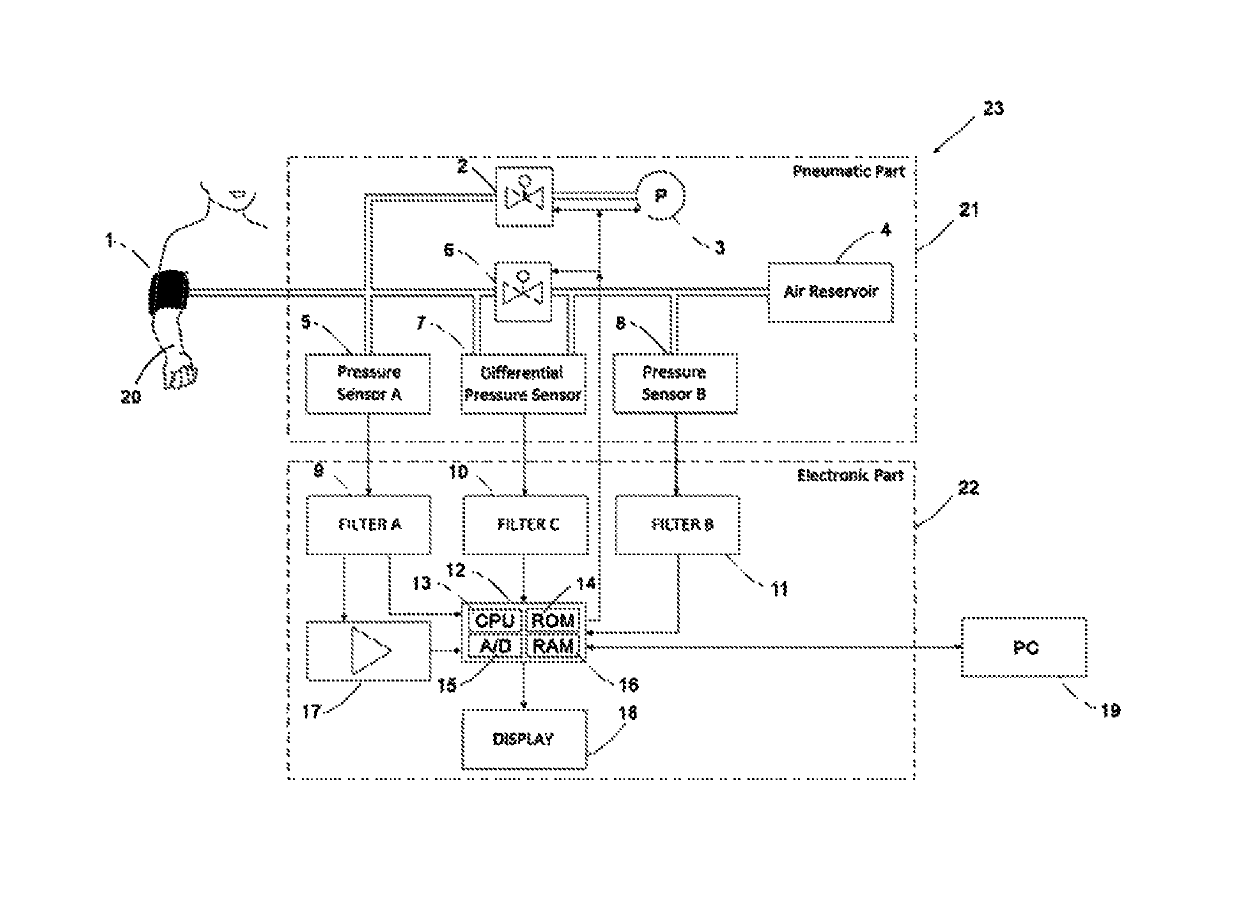Method for an accurate automated non-invasive measurement of blood pressure waveform and apparatus to carry out the same
a non-invasive, accurate technology, applied in the field of accurate automated non-invasive measurement of blood pressure waveform and the field of equipment to carry out the same, can solve the problems of high price, inconvenient operation, and inability to accurately measure the waveform, so as to avoid the burden or harm of patients, the effect of accurate, portable and inexpensiv
- Summary
- Abstract
- Description
- Claims
- Application Information
AI Technical Summary
Benefits of technology
Problems solved by technology
Method used
Image
Examples
Embodiment Construction
[0015]There is a block diagram of device 23 according to the invention in the FIG. 1. The device for non-invasive measurement of suprasystolic pressure pulsations of the invention implemented by a microprocessor 12 with a 24-bit A / D converter 15 with a sampling frequency of 200 Hz. Inflating the pneumatic part 21 of the device 23, including the occlusive cuff 1, which is located in the patient arm 20 and the air reservoir 4 of 100 ml volume, is carried out by electromechanical pump 3. Control (decompression) valve 2 is located between the inputs of the differential pressure sensor 7 and is controlled, as well as the process of inflating the pneumatic part 21, by computing unit 13 of the microprocessor 12, according to an algorithm stored in the program memory of the microprocessor (ROM) 14. Signals measured from the pressure sensor A 5, pressure sensor B 8 and the differential pressure sensor 7 are preprocessed using a filter A 9, filter B 10 and filter C 11—RC low pass filters to e...
PUM
 Login to View More
Login to View More Abstract
Description
Claims
Application Information
 Login to View More
Login to View More - R&D
- Intellectual Property
- Life Sciences
- Materials
- Tech Scout
- Unparalleled Data Quality
- Higher Quality Content
- 60% Fewer Hallucinations
Browse by: Latest US Patents, China's latest patents, Technical Efficacy Thesaurus, Application Domain, Technology Topic, Popular Technical Reports.
© 2025 PatSnap. All rights reserved.Legal|Privacy policy|Modern Slavery Act Transparency Statement|Sitemap|About US| Contact US: help@patsnap.com

